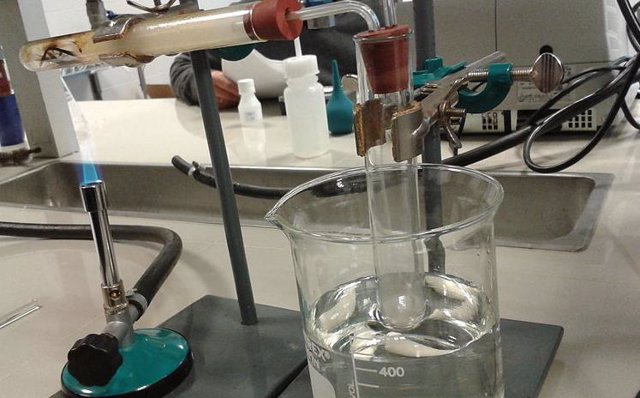May 18. (EUROPE PRESS) –
Cambridge researchers have developed solar-powered technology that converts carbon dioxide and water into liquid fuels that can be added directly to a car engine as drop-in fuel, as published in ‘Nature Energy’.
The team harnessed the power of photosynthesis to convert CO2, water and sunlight into multi-carbon fuels –ethanol and propanol– in a single step. These fuels have a high energy density and can be easily stored or transported.
Unlike fossil fuels, these solar fuels produce net zero carbon emissions and are fully renewable, and unlike most bioethanol, they do not divert any agricultural land from food production.
Although the technology is still in the laboratory phase, the researchers say their “artificial leaves” are an important step in the transition to a fossil fuel-based economy.
Bioethanol is presented as a cleaner alternative to gasoline, since it is made from plants and not from fossil fuels. Today, most cars and trucks on the roads run on gasoline containing up to 10% ethanol (E10 fuel). The United States is the world’s largest producer of bioethanol: according to the Department of Agriculture, almost 45% of all corn grown in the country is used for ethanol production.
“Biofuels such as ethanol are a controversial technology, not least because they take up agricultural land that could be used to grow food,” says Professor Erwin Reisner, who led the research.
Reisner’s research group, based in the Yusuf Hamied Department of Chemistry, has been developing sustainable zero-carbon fuels for several years. inspired by photosynthesis -the process by which plants convert sunlight into food- using artificial leaves.
To date, these artificial leaves have only been able to make simple chemicals, such as syngas, a mixture of hydrogen and carbon monoxide that is used to make fuels, pharmaceuticals, plastics, and fertilizers. But to make the technology more practical, it would have to be capable of directly producing more complex chemicals in a single solar-powered step.
Now, the artificial leaf can directly produce clean ethanol and propanol without the intermediate step of producing syngas.
The researchers developed a catalyst based on copper and palladium. The catalyst was optimized so that the artificial leaf could produce more complex chemicals, specifically the multicarbon alcohols ethanol and n-propanol. Both alcohols are energy-dense fuels that can be easily transported and stored.
Other scientists have succeeded in producing similar chemicals with electrical energy, but this is the first time such complex chemicals have been produced with an artificial leaf using only energy from the Sun.
“Shining sunlight on artificial leaves and making liquid fuel from carbon dioxide and water is an amazing exercise in chemistry”says Motiar Rahaman, first author of the article.
“Normally, when you try to convert CO2 into another chemical using an artificial leaf device, you almost always end up with carbon monoxide or syngas, but here we’ve been able to make a practical liquid fuel using just the Sun’s energy — He adds, “This is an exciting development that opens up new avenues in our work.”
At the moment, the device is a proof of concept and shows only modest efficiency. The researchers are working on optimizing the light absorbers so they can better absorb sunlight and optimizing the catalyst so it can convert more sunlight into fuel.
It will also be necessary to continue working so that the device is scalable and can produce large volumes of fuel the researchers point out.
“Although there is still work to be done, we have shown what these artificial leaves are capable of,” Reisner says. “It is important to show that we can go beyond the simplest molecules and make things that are directly useful as we We are moving away from fossil fuels.









![[Img #74840]](https://thelatestnews.world/wp-content/uploads/2025/01/Tools-from-about-40000-years-ago-reveal-human-adaptation-to-150x150.jpg)


![[Img #74840]](https://thelatestnews.world/wp-content/uploads/2025/01/Tools-from-about-40000-years-ago-reveal-human-adaptation-to-300x200.jpg)
